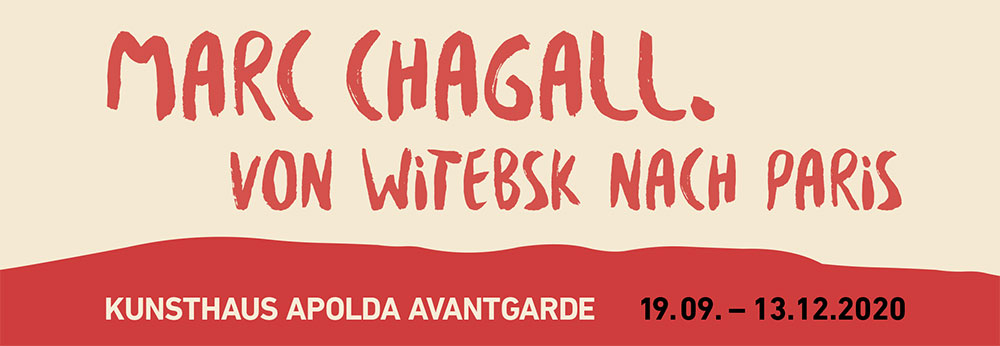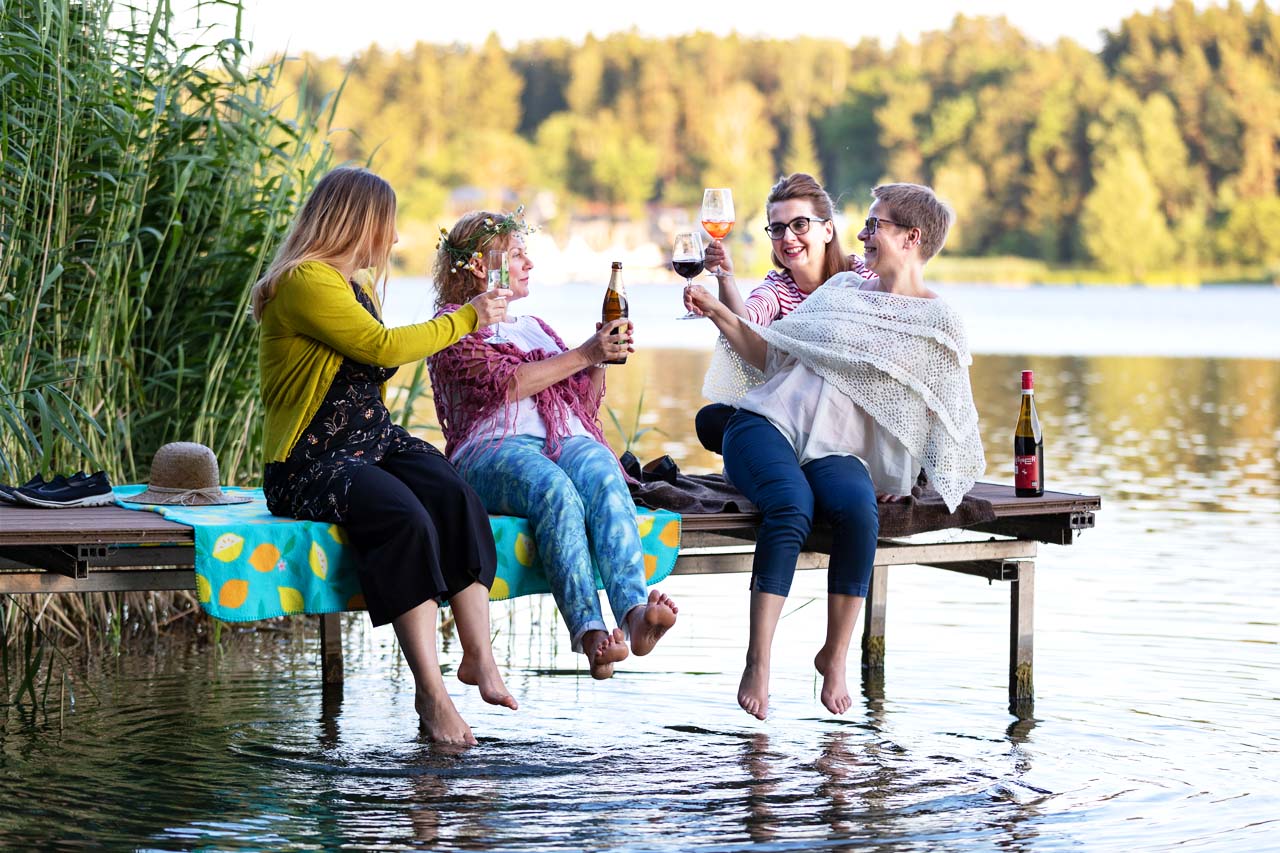Exhibition: Marc Chagall. From Vitebsk to Paris.
Kunsthaus Apolda Avantgarde, September 17 – December 17, 2023
Marc Chagall is considered one of the most extraordinary and idiosyncratic artists of the 20th century. His seemingly dreamlike pictorial motifs, populated by floating and flying people, hybrid beings between humans and animals, and again and again by lovers, puzzle the viewer and transport him to a world beyond the usual understanding of reality. Chagall’s delight in bold hues also earned him a reputation as the “Grand Master of Color.” But his eventful life, which took him from Vitebsk in Russia to Paris, the Russian Revolution, back to Paris, exile in the U.S., and finally back to France, also made him an important mediator between East and West, Judaism and Christianity, archaic and modernist tradition.

He was born in Vitebsk, Russia, in a Jewish “shtetl” influenced by the Hasidic tradition. But it was in Paris that his art found its fulfillment and flowering: in this city, which became Chagall’s great love and haven of inspiration, his visions matured, enabling him to combine his Jewish heritage with the forms and expressiveness of modernity. Paris became the main subject of his late lithographs, which are among the most comprehensive and important modernist printmaking oeuvre next to Picasso. “The land that nourished the roots of my art was Vitebsk, but my art needs Paris like a tree needs water,” said Marc Chagall, who knew how to combine tradition and modernity like no other, creating a cross-cultural yet highly personal body of work.
Especially in the second half of his life, he was one of the most internationally recognized artists and created, in addition to an extensive printmaking oeuvre, murals and spectacular stained-glass works all over the world. Among others, he designed the stained glass windows at the United Nations building in New York and in the synagogue at Hadassah University Hospital Jerusalem, as well as the famous ceiling painting in the Paris Opera House.
Chagall himself has always resisted interpretations as a fantasist: “Call me a fantasist. On the contrary, I am a realist. I love the earth,” he wrote in his 1922 autobiography, “My Life,” and later expressed, “So one no longer speaks, as far as I am concerned, of magic fairy tales, of the fantastic, of Chagall the flying artist. I am a painter who is unconsciously conscious.” For Chagall, all the flying creatures, the twisted heads, the strange figures, and the “air people” that run through his work as personifications of poetic sensibility are linked to concrete memories and meanings that come from the Yiddish language, but also from his experience as a displaced and homeless Jew in exile. At the same time, the components of his paintings that seem so unreal always serve a creative and calculated purpose, as he himself pointed out: “The point is to give my painting a mental shock, which is always motivated by creative reasons.” Although Chagall saw himself as a non-denominational artist who was primarily concerned with a modernist-influenced visual language, he was always aware of the importance of his cultural roots: “It seems to me, however, that if I were not Jewish (with the content I put into that word) I would not have become an artist, or I would be a very different artist.”

Lesen Sie weiter!
More news from the Weimarer Land
Luther Trail
18.9 km long, 6 hours - spectacular views in Luther's footsteps The Thuringian Luther Trail is approx. 961 km long and has been leading as a pilgrimage and hiking trail along its entire length to many well-known and some almost forgotten places of the Reformation that...
Thuringia Three Towers Trail
25,6 km long, 7 hours - with the best viewpoints in the Weimarer Land The Thuringian Three Towers Trail was awarded the "Wanderbares Deutschland" quality seal by the German Hiking Association in 2016. On a 26 km route that leads through the protected landscape of the...
Goethe-Experience Trail
29,4 km long, 8 hours - enjoying the charming surroundings of the Weimarer Land In a tome "How love came into the world." this hike would not go unmentioned. The young J. W. Goethe hiked all too often from Weimar to Großkochberg Castle to visit his beloved Charlotte...





